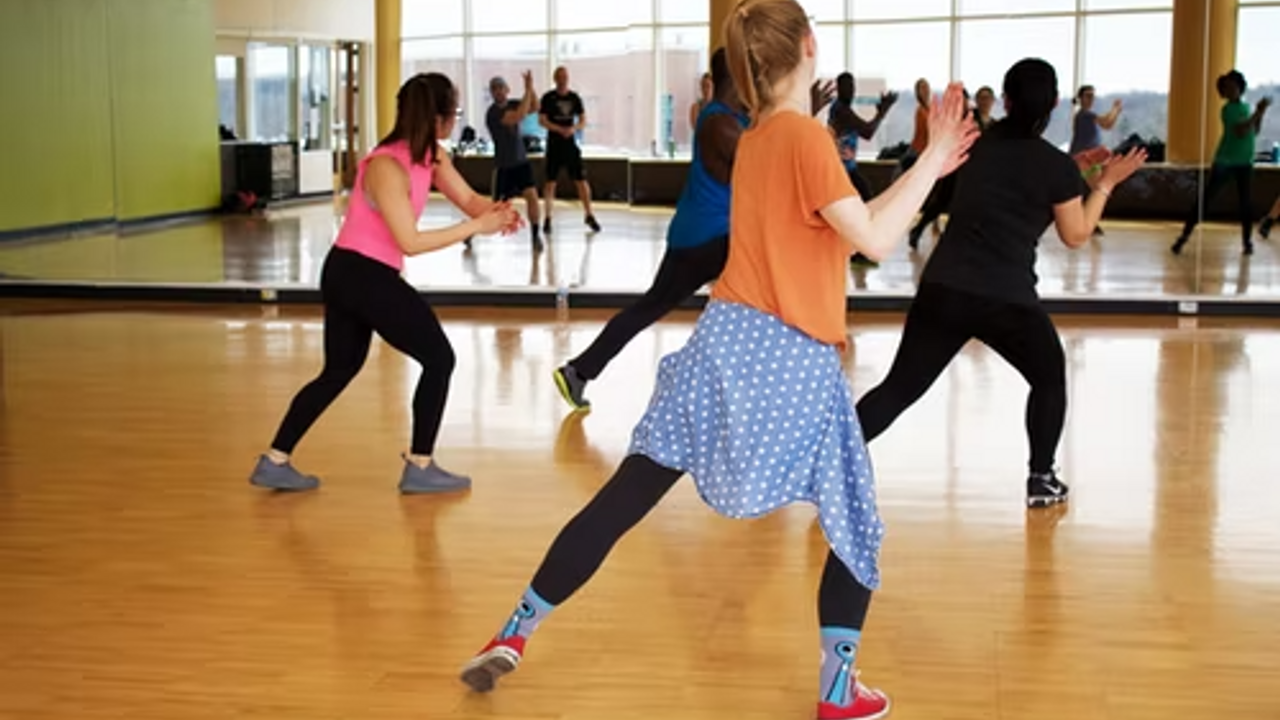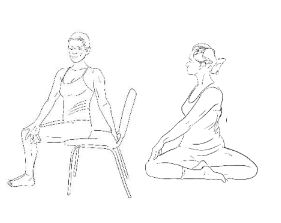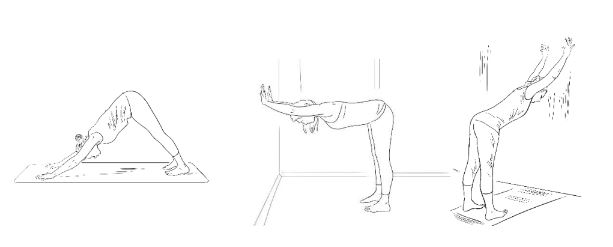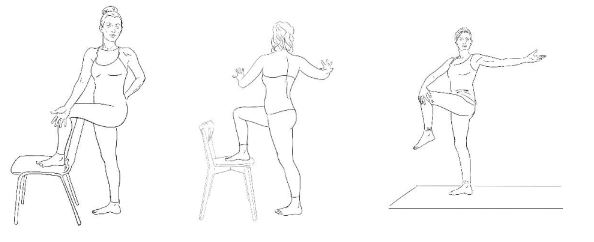The Benefits of Group Exercise
Aug 04, 2023
We are built to move, but when the motivation comes from fitness or health, rather than as a bi-product of basic survival (procuring food, building shelters, keeping warm, defending territory etc) or celebration (dancing, ritual etc) it can be more challenging to get going on our own. We evolved in tribes and our physicality and psyche move between self-regulation and co-regulation – how we adapt on our own and how we do that in relation to others; we need both and they feed into one another.
The importance of relation
The social engagement system of mammals is often called the ventral vagal complex (the front or ventral aspect of the vagus nerve) and humans have more than others. It helps us to produce oxytocin (the ‘love molecule’) and experience bonding, safety, creativity, happiness and joy. Our ‘vagal tone’ or ability to drop into social states with easy breath, an open mind, tolerance of others, creativity, playfulness and wonder is also a predictor of health and happiness.
Activity in the ventral vagus switches off inflammation and allows access to interoception – how we sense inwards and can gauge how we feel in any situation. As we are pack mammals, this soothing nervous system tone is largely influenced by how much ease we can feel inwardly and with those around us. We rely on relation with others and the presence and safety of the tribe to feel we can fully relax and come down to calm states.
Exercising does not need to be hard and fast to feel benefits. Experiencing restorative activities (such as gentle or restorative yoga) in a group setting has been shown to deepen their impact, where the emphasis is on absolute safety and belonging (Psychooncology,2009;18(4):360–368).
Satisfying our needs through group activity:
We all have basic needs that when not satisfied, can leave us feeling fearful, unsatisfied and even anxious or depressed. Humans are naturally set to seek relation with each other as pack mammals. It's part of orientation to check how others in our tribe are and how we make sense of our world, even if we like to spend plenty of time alone. Movement with others can help meet them in the following ways:
- Physiological needs - these are biological requirements for human survival and optimal function; air, food, drink, movement, shelter, clothing, warmth, sex, sleep. If these needs are not satisfied all the other needs become secondary until these basic ones are met. Movement is what allows us to be able to satisfy our own needs, but we rely on others too. Whether this is from necessity of limited mobility or that we have evolved to help each other and cannot do it all alone. Being in-relation with others can be recognising how others can physically support us in this very basic need.
- Safety needs – our ability to settle, self-soothe and relax; so crucial to our wellbeing and health, as it reduces inflammation and allows healing mechanisms to work with the calm, parasympathetic nervous system tone. Group exercise offers feelings of safety as our nervous system registers that we have personal capacity and agency for free movement and strength; highly necessary for self-protection and the basic ability to move away from what we perceive as threat and towards what we view as safe.
- Love and belongingness needs - after physiological and safety needs have been fulfilled, the third level of human needs is social and involves feelings of belongingness. The need for interpersonal relationships motivates behaviour, gesture and movement. Through activities, play, dance and physicality with others we can play out friendship, intimacy, trust, and acceptance, receiving and giving affection and love. Only about 30-40% of our inter-relating is with language and we need to explore the other 60-70% in many physical ways, involving mirroring neurons in the brain. Group exercise can also offer psychological support to stay with movement, even when it seems difficult or tedious.
In a study last year on Social Interaction in Walking Groups and Affective Responses Among Japanese Older Adults (J Aging Phys Act., 2019;17:1-7), twenty-six older adults were asked to participate in five walking group sessions of 40-50 min and report how they felt in terms of positive engagement, tranquillity and negative affect, as well as the number of people interacted with during the walk and their level of satisfaction with those social interactions. The results showed a chicken and egg effect; with positive engagements increasing enjoyment of the activity and vice versa. This ties in to what we can naturally experience; we keep up activities we find enjoyable and find something challenging more difficult if we are doing it alone.
When we are choosing group activities and exercise, it is important to feel a basic level of comfort and safety, even when it is challenging. We need both a sense of safety to relate fully to others, just as we need healthy trusting relationships with others to be able to relate back to our own internal landscape.
The importance of play
The most helpful movement is when we can also laugh and feel the joy in life. Laughter is releasing and physically changes our breath, sending waves of shuddering, releasing and feel-good chemicals (such as beta-endorphins) through our whole system. When we feel weighed down with stress or fear we can ‘lose the joy’ in life, with tissues tightening and holding into stress patterns such as tight jaw, neck and shoulders. Laughter, smiling and delight with others relaxes these and allows us to register ease in the nervous system; felt as open-mindedness, contentment and less reactivity.
Presenting at the Ancestral Health Symposium (AHS) 2019 Presentation at UC San Diego, founder of Primal Play, Darryl Edwards stated; "Positive emotions such as joy have an evolutionary role: they allow us to interact and respond protectively and appropriately to our environment….. Across cultures and species, play appears to be a common experience innate to physical and mental development".
Playing in a group releases twice as many feel-good and pain-relieving endorphins as playing on your own, meaning people can go on moving for longer. More dopamine is released too; this ‘happy hit’ is a reward for anything that promotes our survival, especially cohesion of the‘pack’and improved management of the stress hormone cortisol runs alongside (Neuroscience and Biobehavioral Reviews,2006;30:173-187).
Oxytocin from touch in group play offers opportunities for social bonding and emotional intelligence – with games such as ‘tag’ or ‘it’, the anticipation and fear of being caught also supports mental health by playing out these larger emotions in scenarios where we can make noise and full physical expression to feel and process them in helpful ways. Play deprivation has shown to be related to anxiety and mental health problems and in both children and adults, particularly from overly managed or constricted environments, with lack of contact with nature.
As Dr Stuart Brown says in his book Play: How It Shapes the Brain, Opens the Imagination, and Invigorates the Soul, "The opposite of play is not work - the opposite of play is depression!" Edwards concurs, saying that depression could be viewed as “self-imposed hibernation, not wanting to go out and play…when you do not want to leave your cave and explore the world around you”.
Supporting all of our needs
Liz Oppedijk, Co-Founder and Director of the social enterprise Accessible Chair Yoga CIC specialises in chair yoga and enjoy running classes that are fully inclusive, welcoming those with (and without) physical or mental challenges, where the chair takes the place of the mat and everyone is on an equal playing field. People with a wide range of abilities attend, ranging from 35 to 95 years old, and a ratio of about 40:60 men to women. This has led to a two-month trial in one care home and a 6-month feasibility study in five Hertfordshire care homes, which have shown that weekly chair yoga sessions in a group provide mental, physical, social, and mindfulness benefits as well as tackling age bias and social isolation.
Liz has noticed what much research has observed; that many people find it difficult to exercise on their own – it can take tremendous self-discipline to exercise alone regularly, especially with the extra challenge of physical mobility issues from conditions such as Parkinson’s, MS, stroke, cancer, heart problems, etc.; group exercise helps provide the motivation to keep moving. It offers the chance to learn from others, modelling the teacher and/or other students: to see and hear what works (and doesn’t work) for other people can be inspiring and motivating.
She states; “Groupwork offers the opportunity for social contact and building a sense of community. Many people feel isolated or lonely (for various reasons) and it’s a joy to see my students interacting, chatting and bantering with each other. And of course we now know more about how beneficial social connection is for stimulating our nervous systems to ‘rest and digest’!”
The initial study has moved towards a formal academic study in partnership with the University of Hertfordshire measuring how chair yoga to care home residents affects mood, falls, balance confidence, cognitive impairment, social isolation and overall health (to be published in 2020). The initial work has proved very positive, with quotes from participants (aged between 75-95) such as:
- ‘I enjoy practising in a group … and we have been very supportive of each other.’
- ‘I definitely feel more included in the community … [and have built] stronger friendships.’
- ‘I do like group exercise … you put something of yourself into the next person.’
Modifying movements for different abilities:
As Liz Ojjedijk says; “Group exercise can also provide a sense of agency and build self-confidence. In the case of the chair yoga that I teach, students are given lots of options for each movement so that they can choose the ones that best suit them on the day. Everyone feels and receives benefits from the exercise, doing yoga their own way and thus achieving/succeeding on their own terms.”
Here are some examples of how common yoga and Pilates movements can be varied to include everyone within a group; recognising individual need that can vary day-to-day, whatever our age. This is not about one modification being ‘better’ than another, rather finding how we can find ways to exercise together.
Sitting and twisting upright
Much pain can originate from muscular patterns that don’t support the spine up from gravity and may compress nerves, compounded by daily habits of hunching. With hip, spine and shoulder issues, sitting upright on the ground can be difficult. Sitting consciously on a chair - with ears above shoulders and shoulders above hips - allows uplift with more space between vertebral discs.
Spine undulations
These movements follow the natural rhythm of the breath – rounding the back as the lungs empty on the exhale and arching as they fill on the inhale – to bring ease and space in the spine. They can be done on many planes; all-fours as ‘cat-cow’ is commonly known, but they also work well seated on a chair.
Downwards-facing dog variations
This is a wonderful pose for finding length in the front spine but can be difficult on the wrists and shoulders for many. Using a wall so that we don’t have to push the weight of our body up from the ground can help and the angle can be varied, so the hands are placed higher up the wall the more rounding of the upper back is present.
Matsyendrasana (Sage twist pose) supported standing or chair variation
This standing twist encourages length and release up through the spine, whilst opening across the chest. The standing balance can encourage deep focus on the breath; variations with the lifted foot on a chair offer more support and also bringing hands to a wall is great for everyone as offers resistance for a longer stay to feel the opening of the lift and turn.
Prasarita padottanasana (wide-legged forward bend) variation to chair
Forward folding with a wide stride can wake up the insteps and inner legs in ways we rarely do in modern movement habits, but are so important for how we stand up from the ground. Using a chair to support strength through the legs means a less low fold for less strain on the lower back, allowing focus to be on outside edges of the feet parallel – to whatever width is comfortable – lifting and spreading the toes to activate the feet.
Balasana (Child pose) variations
Child pose can be a challenge for those with knee or hip issues and there are many ways to replicate this nurturing foetal position. On a chair, this may be with chest dropped between the legs or higher up with elbows on knees. A seated variation binding the legs with arms can feel and easier place to breathe into the lower back and neck. If fully on the ground, a lift under torso and head can help drop weight back towards the tailbone, but for those with less range of motion in the knees, raising the hips and supporting the head can provide the support need for rest.
Savasana (corpse pose) variations
Within yoga, the final relaxation is key to allowing the practice before to be integrated into body and mind. For some, lying directly on the ground is uncomfortable for their lower back. Placing a bolster under knees can help soften there and if still uncomfortable, legs up on a chair further supports the lower back. For those who cannot get down to the ground, a seated meditation on a chair is a great alternative.
Discover Whole Health with Charlotte here, featuring access to yoga classes, meditations, natural health webinars, supplement discounts and more...










